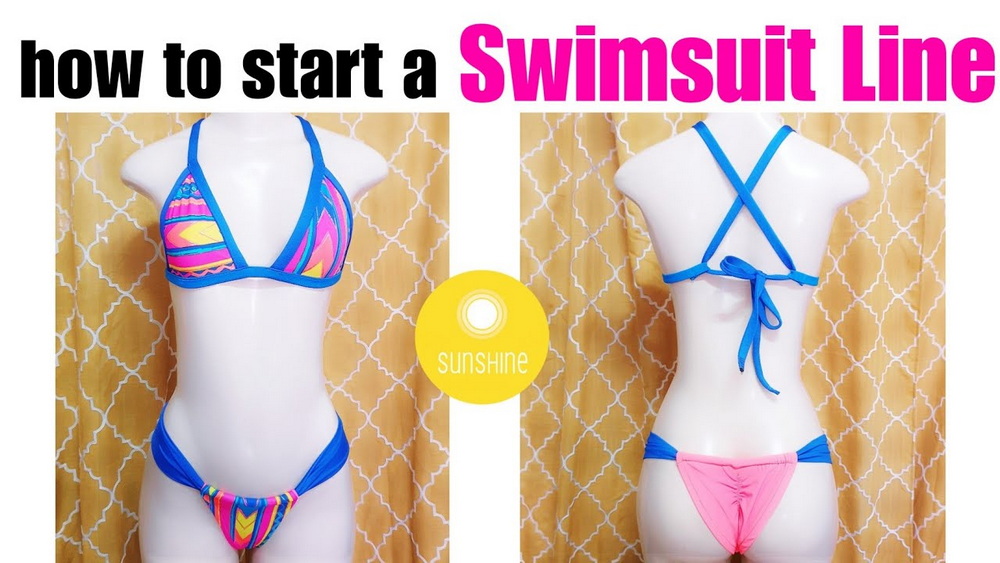Content Menu
● Understanding the Swimwear Market
● Defining Your Brand Identity
● Crafting a Solid Business Plan
● Designing Your Swimwear Collection
● Designing Your Swimwear Line
● Sourcing and Partnering with Manufacturers
>> Types of Manufacturing:
>> Finding a Manufacturer
>> How to Choose:
● Navigating the OEM Swimwear Production Process
● Sampling, Fitting, and Quality Control
● Pricing, Positioning, and Branding
● Building Your Online Presence and Marketing Strategy
● Launching Your Swimwear Company
● Conclusion
● Frequently Asked Questions
● Citations:
Launching a swimwear brand is a dream for many fashion entrepreneurs. The global swimwear market is booming, driven by rising interest in water sports, beach vacations, and the growing demand for stylish, functional swimwear. But how to start a swimwear company that stands out and thrives in this competitive industry? This comprehensive guide will walk you through every step, from initial concept to market launch, with practical tips, industry insights, and expert advice.

Understanding the Swimwear Market
Before you start a swimwear company, research is essential. The global swimwear market is projected to reach $29.1 billion by 2025, growing at a CAGR of 6.2% from 2018[1][2]. This growth is fueled by increased participation in aquatic activities, travel trends, and a shift toward body positivity and inclusivity in fashion.
Key Market Trends:
- Sustainability: Eco-friendly materials like Econyl and Repreve are in high demand.
- Inclusive Sizing: Brands offering a wide range of sizes and adaptive fits are thriving.
- Customization: Personalized prints and mix-and-match options attract modern consumers[1][2].
Action Steps:
- Analyze competitors and identify gaps in the market.
- Define your target audience—consider age, gender, lifestyle, and location.
- Stay updated on design trends, fabric innovations, and consumer preferences[1][3][4].
Defining Your Brand Identity
Your brand identity is the foundation of your swimwear company. It shapes your designs, marketing, and customer experience.
Questions to Consider:
- What is your mission? (e.g., sustainability, luxury, affordability)
- Who is your ideal customer?
- What makes your swimwear unique?
Tips:
- Develop a clear brand story and visual identity (logo, colors, tone).
- Highlight your unique selling proposition (USP)—whether it's eco-friendly fabrics, innovative designs, or exceptional fit[1][2][5].
Crafting a Solid Business Plan
A detailed business plan is crucial for turning your vision into reality and attracting investors or partners.
Key Components:
- Market Analysis: Who are your competitors? What are current trends?
- Business Structure: Will you operate as a sole proprietor, LLC, or corporation? Register your business and obtain necessary licenses[6].
- Financial Projections: Estimate startup costs, production expenses, marketing budget, and revenue forecasts.
- Marketing Strategy: Outline your approach for digital marketing, influencer collaborations, and sales channels[1][2][6].
Designing Your Swimwear Collection
Design is at the heart of every successful swimwear brand. Your collection should reflect your brand identity, meet customer needs, and stand out in the market.
Design Process:
- Research fabrics: Choose materials that offer stretch, durability, UV protection, and comfort. Polyester, nylon, and spandex are common choices[4].
- Sketch your ideas or use digital design tools.
- Consider functionality: Features like adjustable straps, removable pads, and seamless finishes enhance comfort and appeal[1][3].
- Stay on trend: Incorporate popular cuts, colors, and prints.
Pro Tip: Work with professional designers or use design software to create tech packs—detailed documents that manufacturers use to produce your swimwear[7][3].
Designing Your Swimwear Line
Design is a critical aspect of how to start a swimwear company. Here are some tips:
- Research Trends: Stay updated on the latest swimwear trends through fashion shows and online platforms.
- Sketch Your Designs: Create sketches that reflect your brand's style and ethos.
- Choose Fabrics: Select high-quality, durable fabrics that are suitable for swimwear. Look for materials that are resistant to chlorine and UV rays.
Sourcing and Partnering with Manufacturers
Choosing the right manufacturer is a pivotal step in how to start a swimwear company. You can opt for local or overseas partners, each with pros and cons.
Types of Manufacturing:
- OEM (Original Equipment Manufacturer): You provide the designs; the factory handles production under your brand[7].
- Private Label: The manufacturer offers pre-designed products that you can brand as your own.
- Print-on-Demand: Ideal for small batches and testing new designs with minimal risk[4].
Finding a Manufacturer
Finding the right manufacturer is crucial for producing high-quality swimwear. Here are steps to consider:
1. Research Manufacturers: Look for manufacturers that specialize in swimwear production. Check their reputation and quality standards.
2. Request Samples: Before committing, request samples to assess the quality of their work.
3. Negotiate Terms: Discuss pricing, minimum order quantities, and production timelines.
How to Choose:
- Request samples to assess quality.
- Ask about minimum order quantities (MOQs), lead times, and pricing.
- Ensure clear communication and transparency on timelines and materials[4].
Navigating the OEM Swimwear Production Process
Working with an OEM swimwear manufacturer streamlines production and allows you to focus on design and marketing[7].
OEM Production Steps:
1. Initial Consultation: Discuss your vision, target market, and product requirements.
2. Design Development: Collaborate on design concepts, select fabrics, and finalize technical specifications.
3. Sampling: Receive prototypes, test fit and quality, and provide feedback for adjustments.
4. Production Planning: Set timelines, source materials, and schedule manufacturing.
5. Manufacturing: Fabric is cut, sewn, and assembled by skilled workers.
6. Quality Control: Rigorous checks ensure each piece meets your standards.
7. Delivery: Finished products are shipped to your warehouse or fulfillment center[7].
Benefits of OEM:
- Access to specialized expertise and advanced technology.
- Cost-effective production and scalability.
- High-quality materials and consistent quality control[7].
Sampling, Fitting, and Quality Control
Never skip the sampling phase. Fit testing and material adjustments are essential to ensure a flawless final product[3].
Sampling Tips:
- Order multiple samples in different sizes.
- Test for fit, comfort, and durability.
- Gather feedback from potential customers or fit models.
Quality Control:
- Inspect stitching, seams, and overall construction.
- Ensure compliance with safety and labeling regulations.
- Work with manufacturers who implement in-process inspections and final product checks[7].
Pricing, Positioning, and Branding
Setting the right price is a balance between covering costs and appealing to your target market.
Pricing Strategy:
- Calculate all costs: materials, manufacturing, shipping, marketing, and platform fees.
- Research competitor pricing to position your brand appropriately.
- Decide if you want to be a premium, mid-range, or budget-friendly label[4].
Branding Essentials:
- Develop a memorable brand name and logo.
- Create professional packaging and labels.
- Craft a compelling brand story for your website and marketing materials[2][6].
Building Your Online Presence and Marketing Strategy
A strong digital presence is non-negotiable for any modern swimwear brand.
Key Channels:
- Website: Build a user-friendly eCommerce store with high-quality product photos and detailed descriptions.
- Social Media: Use Instagram, TikTok, and Pinterest to showcase your designs, share behind-the-scenes content, and engage with your audience[1].
- Influencer Marketing: Partner with influencers and swimwear models to reach new customers.
- E-commerce Platform: Platforms like Shopify or WooCommerce are user-friendly and offer various features for online selling.
- Website SEO: Use keywords like "how to start a swimwear company" to improve your search engine ranking.
- Email Marketing: Build a subscriber list for promotions, launches, and brand updates.
Marketing Tips:
- Align your strategy with the classic 4 Ps: product, price, place, promotion[4].
- Offer pre-orders or limited editions to create buzz.
- Monitor analytics to refine your campaigns and maximize ROI.
Launching Your Swimwear Company
With your products ready and marketing in place, it's time to launch.
Launch Checklist:
- Finalize inventory and fulfillment logistics.
- Announce your launch date across all channels.
- Offer special promotions or giveaways to attract first customers.
- Collect and showcase customer reviews and testimonials.
- Monitor sales, gather feedback, and iterate for future collections[1][3].
Conclusion
Starting a swimwear company requires careful planning and execution. By understanding the market, defining your brand, and implementing effective marketing strategies, you can successfully launch your swimwear line. Remember, the key to success lies in your ability to adapt to market trends and consumer preferences.
Frequently Asked Questions
1. How much does it cost to start a swimwear company?
Startup costs vary widely but typically range from $5,000 to $50,000, depending on design complexity, order quantities, and marketing spend[4][6].
2. Do I need fashion design experience to start a swimwear company?
No, but understanding fabrics, fit, and trends is essential. Many successful founders collaborate with designers or use OEM manufacturers who offer design support[7][3][4].
3. What is the minimum order quantity (MOQ) for swimwear manufacturing?
MOQs vary by manufacturer, from as low as 50 pieces per style to several hundred. Print-on-demand services offer no-MOQ options for small batches[4].
4. How do I ensure quality control when manufacturing overseas?
Work with reputable OEM manufacturers, request detailed samples, and establish clear quality standards. Consider third-party inspections if needed[7].
5. What are the best fabrics for swimwear?
Polyester, nylon, and spandex are popular for their stretch, durability, and quick-drying properties. Eco-friendly options like recycled nylon are increasingly popular[4].
6. What is OEM swimwear manufacturing?
OEM swimwear manufacturing involves producing swimwear for brands under their specifications and designs, allowing brands to focus on marketing and sales while the manufacturer handles production[7].
7. How long does the OEM swimwear production process take?
The process can take several weeks to a few months, depending on design complexity, material availability, and production capacity[7].
8. Can OEM manufacturers help with design development?
Yes, many OEM manufacturers offer design development services and collaborate with clients to create unique, market-aligned designs[7].
9. What quality control measures are used in swimwear manufacturing?
Quality control includes in-process inspections, final product checks, and adherence to industry standards to ensure products meet specifications and are defect-free[7].
10. How do I market my swimwear company effectively?
Effective strategies include building a strong online presence, leveraging social media, collaborating with influencers, and offering unique value propositions to stand out[1][4].
Citations:
[1] https://baliswim.com/how-to-start-a-swimwear-line-that-lasts/
[2] https://baliswim.com/11-step-swimwear-business-plan-template/
[3] https://www.leftyproductionco.com/post/building-a-swimwear-brand-from-concept-to-market
[4] https://www.printful.com/blog/how-to-start-a-swimwear-line
[5] https://desygner.com/blog/industry/how-to-start-swimwear-business
[6] https://www.starterstory.com/ideas/swimwear-line/how-to-start
[7] https://www.abelyfashion.com/how-does-the-oem-swimwear-production-process-work.html
[8] https://modaknits.com/how-much-does-it-cost-to-make-swimwear/
[9] https://www.reddit.com/r/Advice/comments/thbmwy/i_want_to_start_a_swimsuit_line_and_dont_know/
[10] https://globaltradeplaza.com/product/oem-odm-swimwear-manufacture-custom-bikini


































